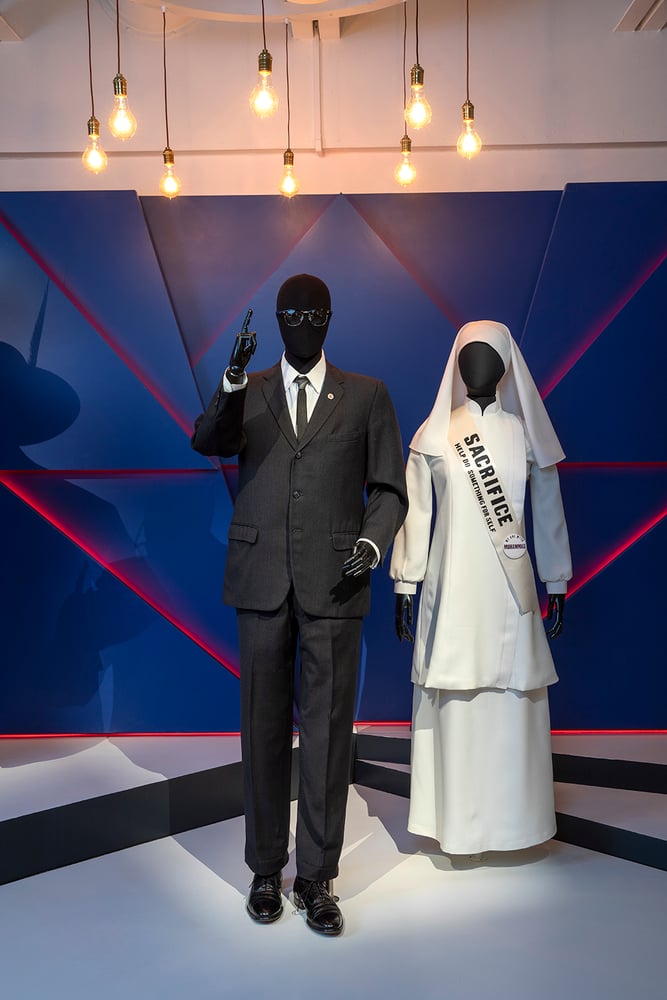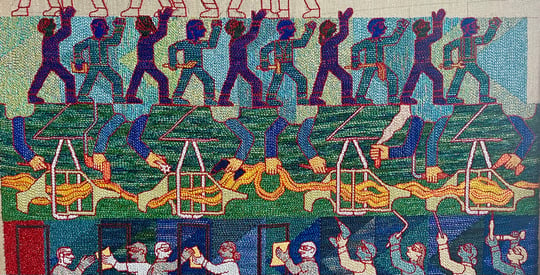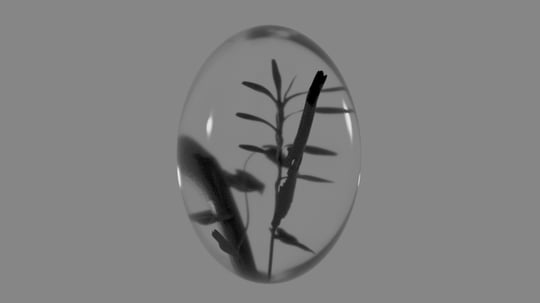
Ruth E. Carter describes her practice in a wall text, “My entire body of work has been an expression of Afrofuturism, using imagination and technology to create costumes that tell stories about our culture that empower the viewers’ belief about themselves. Because they can see themselves represented on the screen, it is Afrofuture.” While this design philosophy is quite easy to see in her work in Black Panther, many of the costumes in SCADFASH’s exhibition, Ruth Carter: Afrofuturism in Costume Design, represent historical narratives.
In the first part of the show, ephemeral material reveals a deep dive into Black diasporic aesthetics from indigenous South African tribal dress for Black Panther (2018) to African American streetwear used in Do the Right Thing (1989). In the second, costumes from her most notable productions including: Roots (1977), Malcolm X (1992), Amistad (1997), The Butler (2013), and Dolemite is My Name (2019) line the perimeter of the room. Lastly, Black Panther (2018) is staged as the centerpiece of the show.
The performance of everyday dress and majestic garb draws out interesting encounters with historical moments. At the gallery entrance, a character’s costume references a direct address scene by the way it is staged. Radio Raheem’s iconic “love” knuckle ring extends to the viewer as the “hate” ring hangs in recess recalling “the tale of good and evil,” a pivotal monologue performed by Bill Nunn in Do the Right Thing (1989). The staging of Kizzy’s costumes from the television mini-series Roots highlights her status as an enslaved young girl. Two identical teenaged mannequins are position next to each other, one donning a chemise gown and embroidered blue overdress, while the other, a tattered, light-colored, empire-waist dress with a pregnant belly. The juxtaposition of these pieces captures different moments in a character’s life, and the dehumanizing violence of slavery.

At the other end of the gallery, the costumes of Black Panther present an extensive study of the relationship between African and Black American sartorial aesthetics. The jewelry-like metal neck and arm rings in the armor of Okoye and the Dora Milaje reference the Ndebele tribe, but also the bangles of Black American women. The regal, purple, garment worn by Forest Whitaker’s character, Zuri, points to the traditional Nigerian agbada, but added drama with abundant tubing around frame. The Mining Elder’s red ochre dreadlock style headdress resembles the hair and skin rituals of the Himba people of Namibia, but also the trending bright red locs among young Black men in Atlanta. Erik Killmonger’s costume presents a character with informed historical knowledge, an urban sensibility, and a confident personal aesthetic. His shearling-lined denim jacket, white-tee, black drop-crotch sweats, and high-end combat boots are staples in the closets of many Black Americans, and challenge the stereotypical image of an anthropologist. These design elements are visual citations of Black diasporic aesthetic traditions that combine African and Black American style.
At the end of the show, as I stood in the center of the gallery my body vibrated with sensations. As a visitor, I was forced to reckon with the historical realities of the sartorial material around me. I was mistakenly approached by a security guard about my “behavior in the gallery”. After a conversation with the docents and security guards, they explained that security was called, but for a group of people causing a disturbance. They made a mistake, but I still wondered how a silent, solo, individual could be mistaken for a group of rowdy visitors? Somehow I still wound up on stage, on display, an aberration in space. Anyway, they apologized profusely.
In 2017, curator and pleasure activist, Ingrid LaFleur, ran for mayor of Detroit on an Afrofuturist platform, promoting liberatory practices for Black Futures as pathways towards more equitable solutions. Many people believe seeds of afrofuturism can be found in W.E.B. DuBois’s writing in The Souls of Black Folk. He explains how a particular metaphysical and phenomenological experience developed through the racial division of peoples in American society. It was the unique experience of being Black that produced a second sight, or “double consciousness”. Through exhibitions like this one, we learn how this distinct experience affords people the ability to create technology and worlds outside the realm of our known possibilities, but also forces us to question the relationship between history, narrative, Blackness, and the record through ideas of afrofuturism.
Ruth E. Carter: Afrofuturism in Costume Design is on view at SCAD FASH through September 12.





